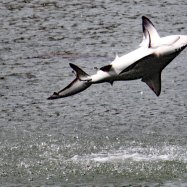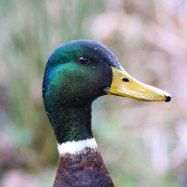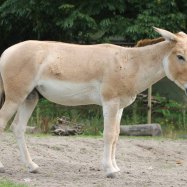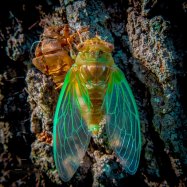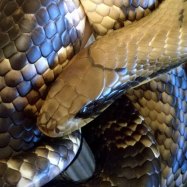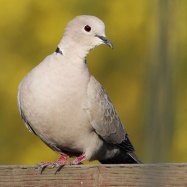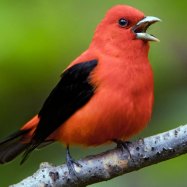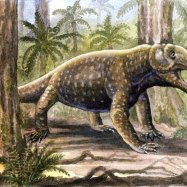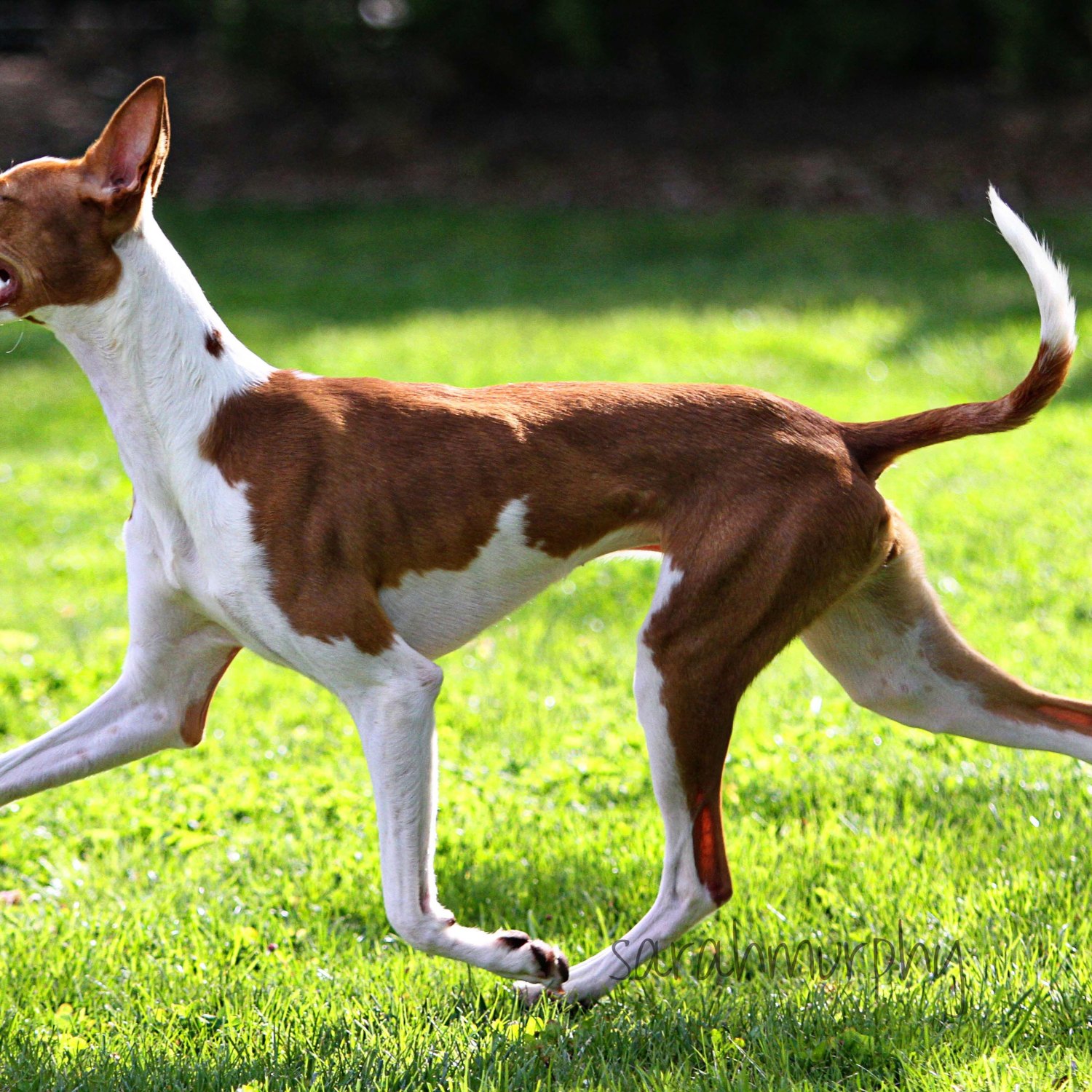
Ibizan Hound
22-29 inches
The Ibizan Hound, also known as the Beezer, is a stunning dog breed hailing from the Spanish island of Ibiza. With a height of 22-29 inches and a lean, muscular body, they are excellent hunters. They are part of the Canidae family, making them great companions for those who enjoy an active lifestyle. #IbizanHound #Beezer #Canidae #Ibiza #dogbreed
Animal Details Summary:
Common Name: Ibizan Hound
Kingdom: Animalia
Habitat: Open areas, deserts, forests
The Majestic Ibizan Hound: A Stunning Combination of Beauty and Brains
The Ibizan Hound is a truly remarkable creature that has captivated humans for centuries with its elegant appearance and exceptional abilities. Also known as the Podenco Ibicenco, this regal canine is a popular breed in Spain, specifically on the island of Ibiza. Its striking appearance, intelligence, and athletic prowess have made it a favorite among dog lovers all over the world. So, if you are curious to learn more about this magnificent creature, then sit back, relax, and let us take you on a journey into the world of the Ibizan Hound Ibizan Hound.The History and Origin of the Ibizan Hound
The Ibizan Hound, as the name suggests, originated from the island of Ibiza in the Mediterranean Sea. This ancient breed is believed to have been brought to the island by the Phoenician traders in 800 BC. However, some sources claim that the breed has been around since the time of the Egyptian Pharaohs, making it one of the oldest dog breeds in the world.In its early years, the Ibizan Hound was primarily used for hunting small game, such as rabbits and hares, on the rocky terrain of Ibiza. Its slender body, remarkable speed, and excellent sight made it the perfect hunting companion for the local farmers. However, the breed's popularity soon spread to the mainland of Spain and other parts of Europe, where it was used for both hunting and as a family companion.
The Appearance and Physical Characteristics of the Ibizan Hound
The Ibizan Hound is a tall and lean dog breed that stands at an average height of 22-29 inches and weighs between 50-65 pounds. Its body is long, athletic, and elegant, with strong and well-defined muscles. The head is elongated and triangular, with large, erect ears that give the breed its distinctive appearance Indian Cobra. The Ibizan Hound is often described as having a deer-like grace, with a deep-chested body and a long, curved tail.One of the most striking features of the Ibizan Hound is its coat, which comes in a wide range of colors, including red, white, and tan. Some Ibizan Hounds also have a combination of these colors, making each dog unique and visually stunning. The breed has a short, smooth coat that doesn't require much grooming, making it an ideal pet for those with busy schedules.
The Unique Personality and Behavior of the Ibizan Hound
Apart from its physical beauty, the Ibizan Hound is known for its curious and lively temperament. This breed is highly intelligent and is always looking for ways to keep its mind engaged. They are also known to be fiercely independent and can be stubborn at times, which makes them challenging to train. However, with consistent and patient training, the Ibizan Hound can learn and master a wide range of commands and tricks.One of the most intriguing characteristics of the Ibizan Hound is its ability to jump. This breed has strong hind legs, and it is not uncommon to see them jumping over fences and obstacles of up to six feet. Therefore, it is essential to have a secure, fenced yard to ensure the safety of your pet and prevent any potential escapes.
The Ibizan Hound also has a strong prey drive, thanks to its long history of hunting. This means that they may not get along well with smaller animals, such as cats or birds, and may chase them if given the opportunity. Early socialization is crucial to ensure that the Ibizan Hound is well-adjusted and well-behaved around other animals and people.
The Ibizan Houd's Habitat and Geographical Distribution
The Ibizan Hound is a highly adaptable breed and can thrive in a variety of environments. However, they do require plenty of exercise and outdoor playtime, making them better suited for homes with a yard or access to open spaces. This breed fares well in warm climates, thanks to its short coat, but may require additional protection, such as a coat, during colder months.In terms of geographical distribution, the Ibizan Hound is primarily found in the Iberian Peninsula, with a significant population on the island of Ibiza, where the breed originated. However, it is also gaining popularity in other parts of Europe, the United States, and other countries worldwide.
The Ibizan Hound's Role in Modern Society
Although the Ibizan Hound is still used for hunting in some parts of Spain, its remarkable abilities have also made it a popular choice for other tasks. This breed is highly sought after for lure coursing, a sport that simulates the chase of prey using a mechanical lure.Moreover, the Ibizan Hound has also found a place in people's hearts as a beloved family pet. Its loyalty, playfulness, and devotion make it an excellent addition to any household. However, due to its independent nature, the Ibizan Hound may not be suitable for first-time dog owners or those who are not willing to put in the time and effort to properly train and socialize their pet.
The Ibizan Hound and Natural Language Processing (NLP)
In recent years, Natural Language Processing (NLP) has become a popular field of study, with many applications in the technology industry. NLP focuses on understanding human language and how it can be utilized to create intelligent machines and systems. In the case of the Ibizan Hound, its remarkable ability to understand commands and respond appropriately makes it an ideal candidate for NLP research.Studies have shown that dogs, including the Ibizan Hound, have a remarkable ability to understand human language, tones, and emotions. They can also be trained to respond to specific commands and carry out tasks, making them perfect subjects for NLP research. Through NLP, we can gain a better understanding of how dogs interpret and respond to human language, leading to advancements in the field of animal behavior and communication.
The Future of the Ibizan Hound
The Ibizan Hound has come a long way from its humble origins on the island of Ibiza. Today, it is a highly regarded breed with a growing fan base worldwide. Its unique combination of beauty, intelligence, and athleticism makes it a favorite among dog lovers, while its role in NLP research opens up endless possibilities for advancements in canine intelligence and behavior.However, as with any other breed, the Ibizan Hound faces several challenges, including genetic health issues and the risk of becoming a victim of the illegal pet trade. It is crucial for responsible breeders and pet owners to prioritize the health and well-being of the breed to ensure its future success.
In conclusion, the Ibizan Hound is a truly remarkable creature that has captured the hearts and minds of many. Its striking appearance, intelligence, and athletic abilities make it a breed like no other. Whether you are looking for a loyal companion or a subject for NLP research, the Ibizan Hound is truly a majestic creature that will continue to amaze and impress people for generations to come.

Ibizan Hound
Animal Details Ibizan Hound - Scientific Name: Canis lupus familiaris
- Category: Animals I
- Scientific Name: Canis lupus familiaris
- Common Name: Ibizan Hound
- Kingdom: Animalia
- Phylum: Chordata
- Class: Mammalia
- Order: Carnivora
- Family: Canidae
- Habitat: Open areas, deserts, forests
- Feeding Method: Carnivorous
- Geographical Distribution: Iberian Peninsula
- Country of Origin: Spain
- Location: Ibiza
- Animal Coloration: Various colors including red, white, and tan
- Body Shape: Lean and muscular
- Length: 22-29 inches
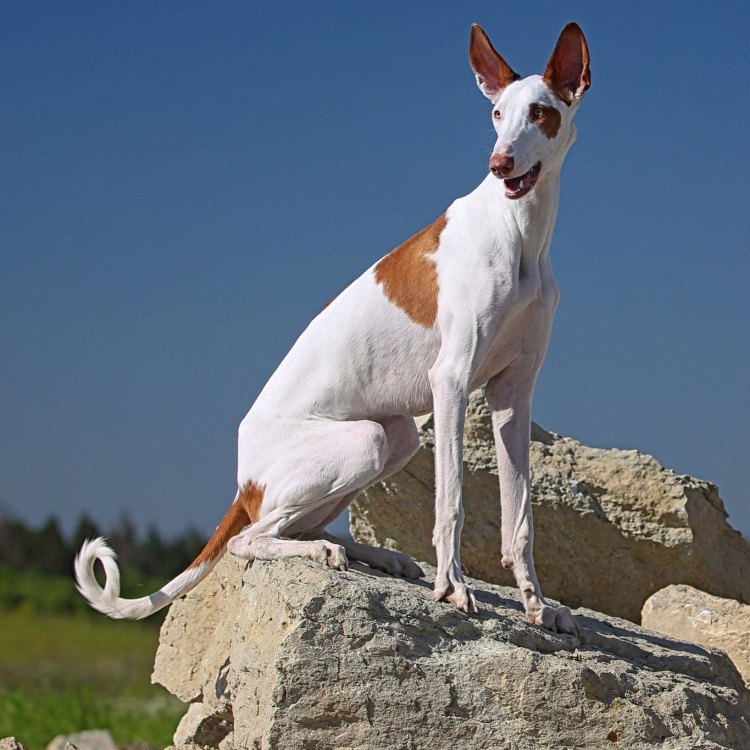
Ibizan Hound
- Adult Size: Medium to large
- Average Lifespan: 10-14 years
- Reproduction: Sexual
- Reproductive Behavior: Mating occurs between male and female individuals
- Sound or Call: Varies from barking to howling
- Migration Pattern: Non-migratory
- Social Groups: Often live and hunt in groups
- Behavior: Active, intelligent, and independent
- Threats: Hunting, habitat loss, and inbreeding
- Conservation Status: Not evaluated
- Impact on Ecosystem: Help control the population of small mammals
- Human Use: Hunting, companion, and show dog
- Distinctive Features: Large erect ears and a slender body
- Interesting Facts: One of the oldest dog breeds, originated in ancient Egypt
- Predator: No natural predators
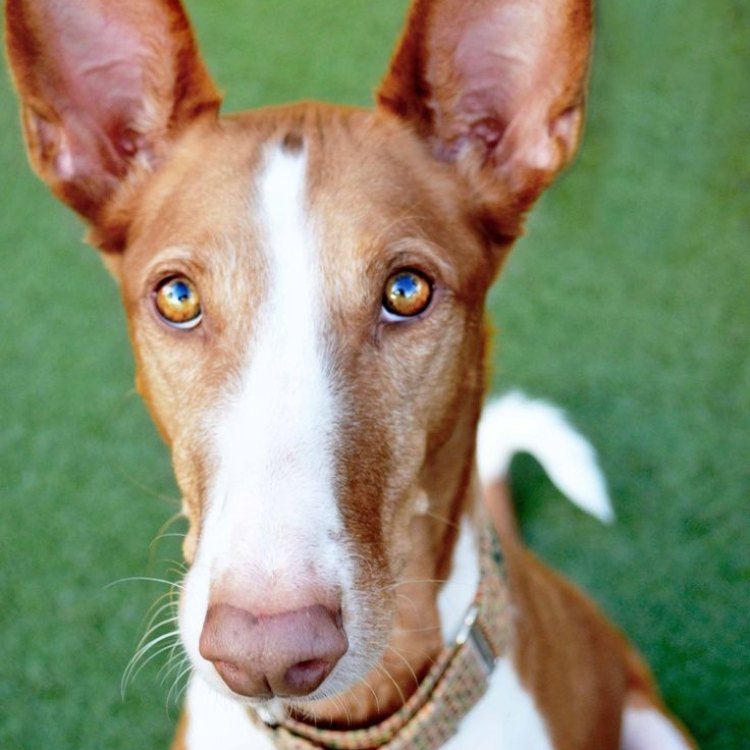
Canis lupus familiaris
The Fascinating Features of the Ibizan Hound: From Ancient Egypt to Modern Times
The Ibizan Hound, also known as the Podenco Ibicenco, is a unique dog breed that has captured the hearts of many over the years. With its distinctive features, ancient ancestry, and fascinating role in both nature and human society, it is a breed that deserves to be celebrated and appreciated. In this article, we will delve into the world of the Ibizan Hound, exploring its characteristics, behavior, and impact on the ecosystem and human life.The Basics: Adult Size and Lifespan
The Ibizan Hound is a medium to large-sized dog, with a height ranging from 22-29 inches and a weight of 42-55 pounds PeaceOfAnimals.Com. They are known for their tall, slender bodies and strong, lean muscles, making them the perfect hunters. This breed has a relatively long lifespan of 10-14 years, which is impressive considering their active and adventurous nature.
Reproduction and Behavioral Patterns
Like most animals, Ibizan Hounds reproduce sexually, with mating occurring between male and female individuals. However, they have some unique reproductive behaviors that make them stand out from other breeds. They have highly specific mating rituals, with males often dancing and performing acrobatic moves to attract females. These rituals can last for hours, showcasing the intelligence and playfulness of this breed.
Furthermore, once pregnant, female Ibizan Hounds have a relatively long gestation period of 60-63 days before giving birth to a litter of 4-6 puppies. During this time, they require extra care and attention, as their bodies go through significant changes to prepare for motherhood.
Sound and Call
Ibizan Hounds have a wide range of vocalizations, from barking to howling Insects. They are known for their distinct yodeling sound, which is a unique mixture of barking and howling. This yodeling sound is often used when they are excited or trying to get their owner's attention. It is a charming trait that adds to their character and lovable nature.
Migration and Social Groups
Unlike other dog breeds, Ibizan Hounds are non-migratory. They prefer to stay in one area, and their territorial instincts can be quite strong. This trait is a direct result of their hunting nature, as they need to know their surroundings well to be successful in hunting.
In the wild, these hounds are social animals, often living and hunting in groups. Even in domestic settings, they crave companionship and can get lonely if left alone for extended periods. It is essential for owners to give their Ibizan Hounds plenty of attention, physical activity, and mental stimulation to keep them happy and fulfilled.
Behavior: Active, Intelligent, and Independent
Ibizan Hounds are highly active and energetic dogs that require plenty of exercise and playtime. They have a high prey drive and have been used as hunting dogs since their ancient origins. This trait has also made them excellent agility and lure coursing competitors.
Moreover, this breed is known for its intelligence and independence, which can make training a bit challenging. They are self-assured dogs that require a firm and consistent owner to establish rules and boundaries. However, with proper training and socialization, Ibizan Hounds can make loyal and loving companions.
Threats and Conservation Status
Sadly, Ibizan Hounds are facing several threats that can impact their survival in the wild. One of the biggest threats is hunting, as they were historically used for hunting small game in their native land, the Balearic Islands of Spain. Habitat loss and fragmentation are also significant concerns, as urbanization and development continue to encroach on their natural habitats.
Additionally, inbreeding is a growing concern for this breed. With a limited gene pool and the rise in demand for Ibizan Hounds, there is a risk of genetic diseases and health issues. It is crucial for responsible breeders to prioritize genetic diversity and consider breeding practices that promote the health and well-being of the Ibizan Hound.
At present, the conservation status of the Ibizan Hound has not been evaluated. However, several organizations, such as the Ibizan Hound Club of the United States, are working towards preserving and protecting this unique breed.
The Impact on Ecosystem: Natural Pest Control
One of the lesser-known roles of the Ibizan Hound is its impact on the ecosystem. These dogs have a natural instinct to hunt and have been used for centuries to control the population of small mammals, such as rabbits and rodents. In their native land, the Balearic Islands, these small mammals can cause significant damage to crops and vegetation. The hunting prowess of Ibizan Hounds helps to keep their numbers in check, thus preventing potential ecological imbalances.
Furthermore, the Ibizan Hound's presence in the ecosystem can also help control the spread of diseases carried by small mammals. This is especially important in areas where these diseases can harm other animals and even humans.
Human Use: Hunting, Companion, and Show Dog
Since ancient times, Ibizan Hounds have been used for hunting small game, such as rabbits, birds, and even deer. Their speed, agility, and keen sense of smell make them exceptional hunting partners.
In recent times, however, this breed has become a popular companion and show dog. Their unique appearance, charming personality, and loyal nature make them a great addition to any family. They are also gaining popularity in the show ring, competing in agility, obedience, and conformation competitions.
Moreover, their adaptable and active nature makes them suitable for various lifestyles, whether living in a rural or urban setting. As long as they receive adequate exercise, mental stimulation, and affection, they can thrive in any environment.
Distinctive Features and Interesting Facts
One look at an Ibizan Hound, and it's hard not to notice their distinctive features. Their large, erect ears and slender bodies give them an elegant and regal appearance. These features not only make them beautiful, but they also serve a purpose in their hunting abilities, helping them to locate and track prey.
Aside from their notable features, Ibizan Hounds also have a fascinating origin story. They are believed to be one of the oldest dog breeds, with roots tracing back to ancient Egypt. Their ancestors were often depicted in hieroglyphs, and mummified remains of Ibizan Hound-type dogs have been found in Egyptian tombs.
Predators: No Natural Enemies
The Ibizan Hound is a confident and formidable dog that has no natural predators in the wild. Historically, they were used as guard dogs to protect livestock and property. To this day, they remain vigilant and make great watchdogs.
In Conclusion
The Ibizan Hound is a fascinating breed that has a rich history, unique characteristics, and a vital role in both nature and human society. From their ancient origins in Egypt to their modern-day popularity as companion and show dogs, they have carved out a special place in the hearts of many. However, their conservation and preservation are crucial to ensure their continued existence and continued contribution to the ecosystem. As responsible individuals, it is essential to learn about and appreciate the Ibizan Hound, helping to protect this remarkable breed for generations to come.
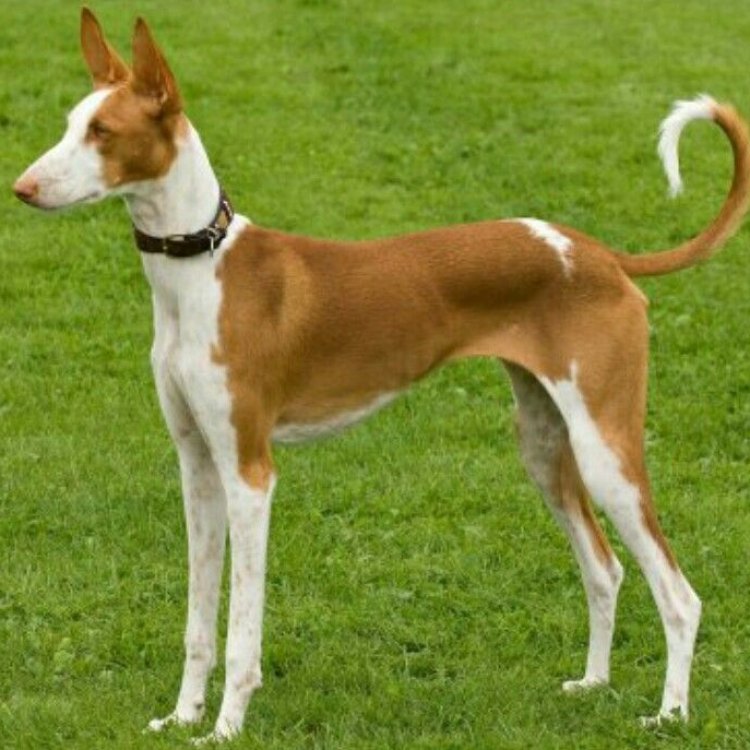
The Majestic Ibizan Hound: A Stunning Combination of Beauty and Brains
Disclaimer: The content provided is for informational purposes only. We cannot guarantee the accuracy of the information on this page 100%. All information provided here may change without prior notice.

